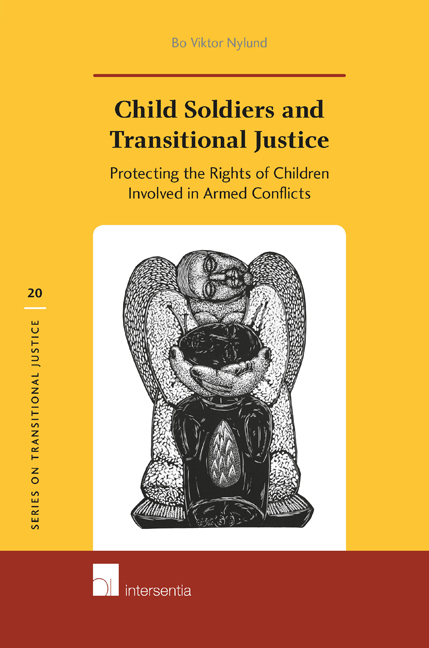 Child Soldiers and Transitional Justice
Child Soldiers and Transitional Justice Published online by Cambridge University Press: 12 December 2017
I asked: “What were your duties as a child soldier in the movement?”
He said: “I led some of the boys in the armed group who prepared tea and food, washed the cars, and carried our belongings.”
I asked him: “What happened if those boys did not do what you told them to?”
He replied: “You hit him with the Kalashnikov.”
I asked him: “Would the commander do the same to you if he found out?”
He replied: “Nobody asks and nobody would report on you. You hit him so hard that the others will not be impolite again.”
I asked him: “If somebody older than you, like a commander, ordered you to do something you do not like, what do you do?”
He replied: “If he is a senior commander, I will obey him; but if he is an ordinary person, I hold a Kalashnikov and he holds a Kalashnikov and the one who fires first will defeat the other.”
INTRODUCTION
The rule of law implies that there is a high predictability as to how known rules will be applied, as opposed to arbitrary action by government or non-state actors. The situations where child recruitment and use take place are inherently unstable, however, underscoring the considerable need to promote the overall elements of the rule of law in order to strengthen this aspect of transitional justice. This can present both challenges and opportunities, as there is scope to introduce new ways of looking at the issues.
One great challenge is to determine what law prevails in a situation where there could be several options. In this regard, both ex post facto legislation and differences in application of the law due to the nature of the conflict or the actor involved in carrying out the violation must be taken into consideration – recognizing that the law of a previous regime may have shortcomings or there may be no law in place on the issue of concern.
Chapter 2 considers the circumstances of the child's participation during a conflict and extends the focus to encompass the end result for the child, as well as the aim of prohibiting and redressing the act itself – regardless of the situation on the ground.
To save this book to your Kindle, first ensure [email protected] is added to your Approved Personal Document E-mail List under your Personal Document Settings on the Manage Your Content and Devices page of your Amazon account. Then enter the ‘name’ part of your Kindle email address below. Find out more about saving to your Kindle.
Note you can select to save to either the @free.kindle.com or @kindle.com variations. ‘@free.kindle.com’ emails are free but can only be saved to your device when it is connected to wi-fi. ‘@kindle.com’ emails can be delivered even when you are not connected to wi-fi, but note that service fees apply.
Find out more about the Kindle Personal Document Service.
To save content items to your account, please confirm that you agree to abide by our usage policies. If this is the first time you use this feature, you will be asked to authorise Cambridge Core to connect with your account. Find out more about saving content to Dropbox.
To save content items to your account, please confirm that you agree to abide by our usage policies. If this is the first time you use this feature, you will be asked to authorise Cambridge Core to connect with your account. Find out more about saving content to Google Drive.